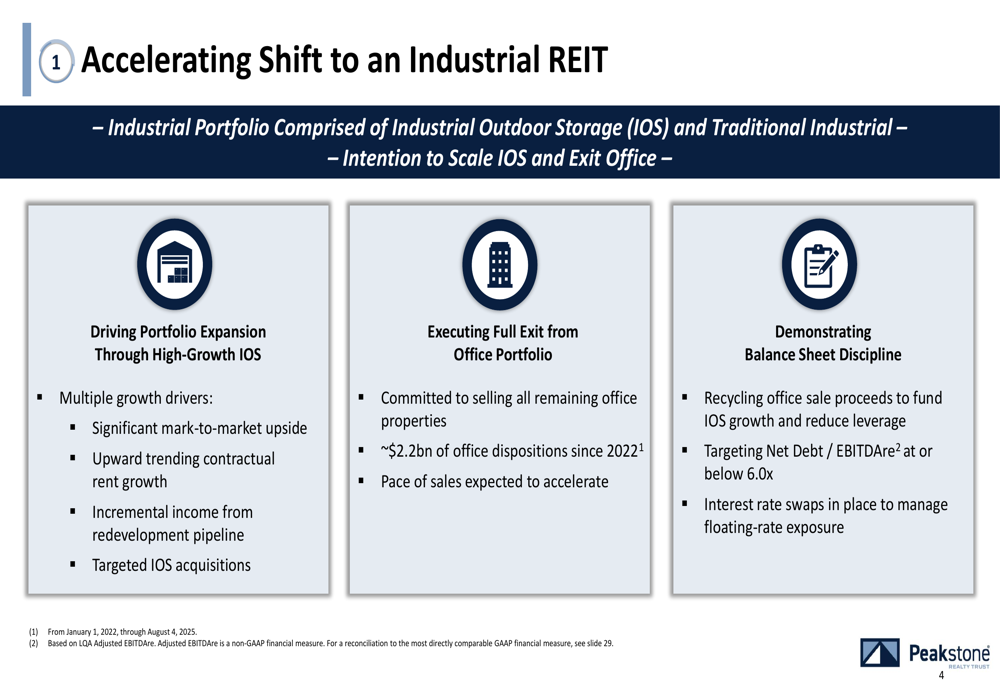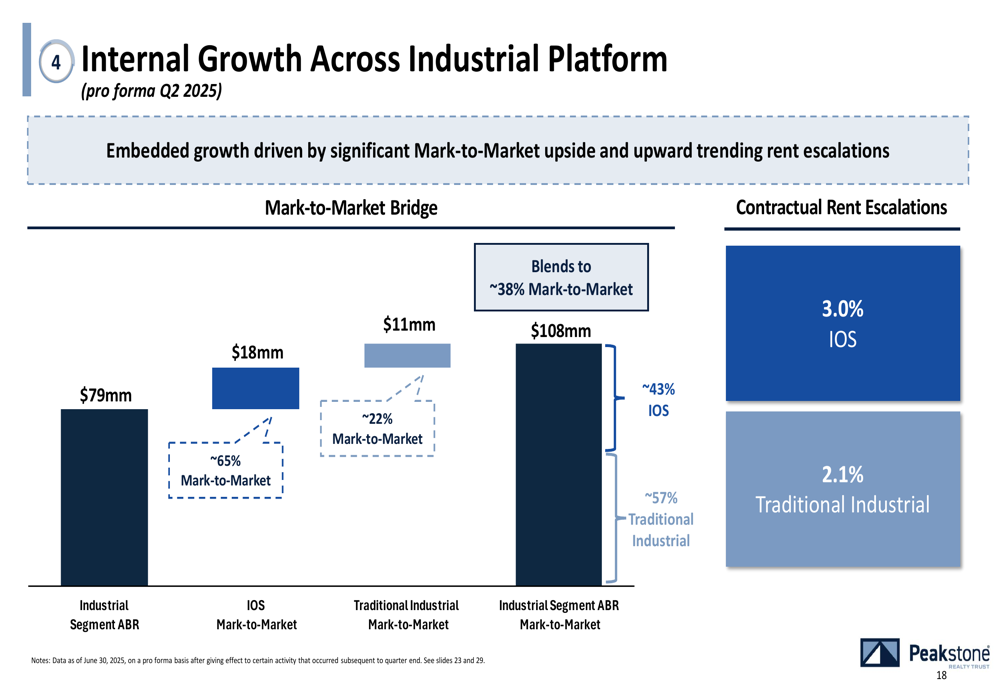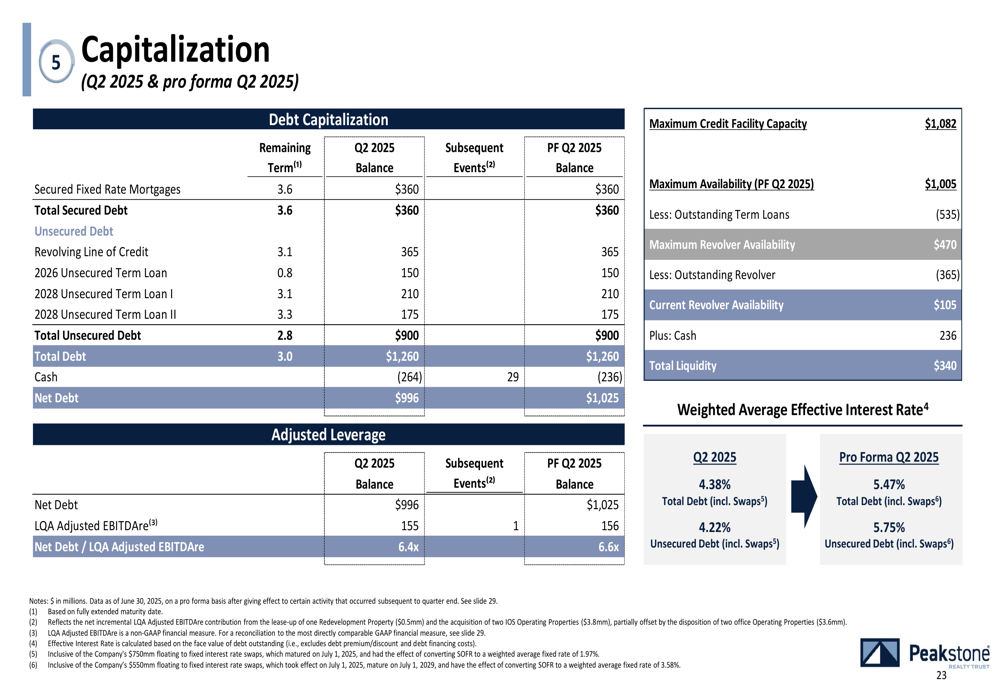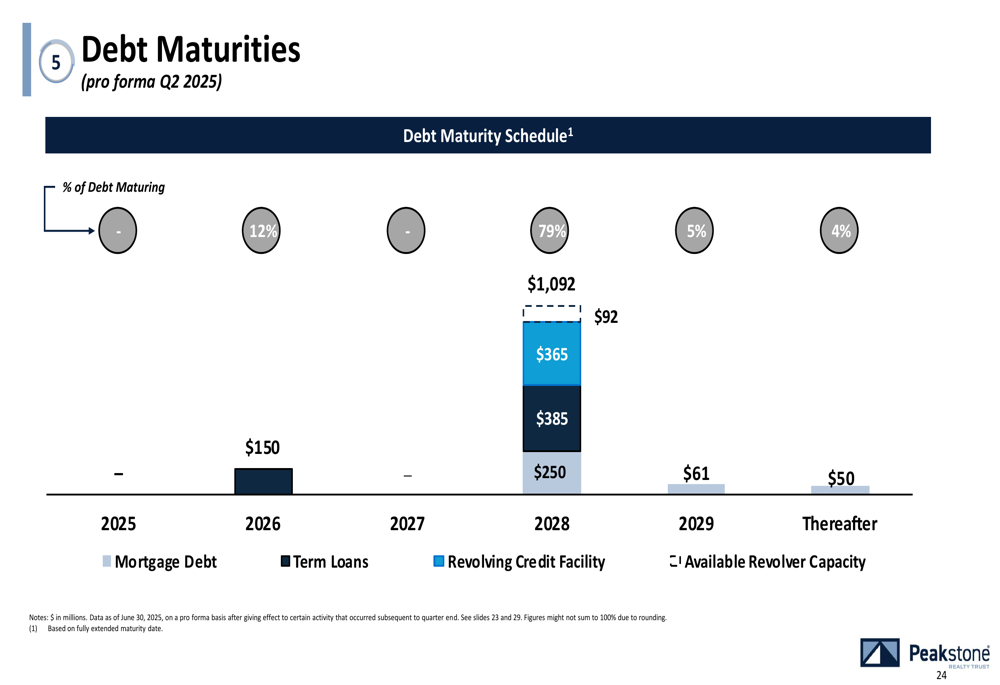Denison Mines announces $250 million convertible notes offering
Introduction & Market Context
Peakstone Realty Trust (NYSE:PKST) continues to accelerate its strategic transformation from an office-focused REIT to an industrial property specialist, according to its second quarter 2025 investor presentation. The company is particularly emphasizing Industrial Outdoor Storage (IOS) properties while steadily divesting its office portfolio and improving its debt metrics.
Trading at $13.82 as of August 7, 2025, PKST has shown resilience since its Q1 earnings report when it traded at $11.51, despite reporting a net loss of $49.4 million in that quarter. The company’s strategic pivot comes amid persistent challenges in the office real estate sector and growing demand for industrial properties, especially those supporting logistics and supply chain operations.
Strategic Transition Highlights
Peakstone’s presentation outlines a three-pronged approach to its transformation: scaling IOS properties, exiting office assets, and maintaining balance sheet discipline.
As shown in the following slide detailing the company’s core strategy:

The company reported increasing its IOS annual base rent (ABR) by over 25% since the beginning of 2025, demonstrating significant momentum in its industrial expansion. Simultaneously, Peakstone completed $158 million of office property sales in Q2 2025, with an additional $24 million in sales after quarter-end, bringing year-to-date office dispositions to $216 million.
The remaining office portfolio now represents approximately 35% of the company’s real estate net book value at $615 million, down from higher levels earlier in the year. This marks substantial progress in the company’s stated goal of completely exiting the office sector.
Portfolio Composition & Performance
Peakstone’s industrial portfolio now consists of 72 properties divided between 53 IOS assets and 19 traditional industrial properties. The following slide provides a comprehensive breakdown of the portfolio’s key metrics:

The IOS portfolio comprises 476 usable acres generating $28.2 million in annual base rent with significant embedded growth potential, as evidenced by a 65% mark-to-market opportunity. These properties feature average rent escalations of 3.0% and maintain approximately 100% occupancy with a weighted average lease term (WALT) of 4.5 years.
The traditional industrial assets encompass 9.0 million rentable square feet producing $50.4 million in ABR with a 22% mark-to-market opportunity, 2.1% average rent escalations, and 5.5 years WALT at 100% occupancy.
Geographically, the industrial portfolio is strategically positioned near major logistics infrastructure, as illustrated in this distribution map:

The portfolio spans 19 states and 33 markets, with approximately 61% of properties located in coastal and Sunbelt regions and roughly 50% situated near ports. This positioning aligns with the company’s strategy to focus on supply-constrained markets with strong logistics connections.
Growth Drivers & Acquisitions
Peakstone identified several growth drivers for its industrial platform, including significant mark-to-market opportunities, contractual rent escalations, redevelopment projects, and targeted acquisitions.
The company’s presentation highlights substantial embedded growth potential across its industrial portfolio:

With a combined 38% mark-to-market opportunity, Peakstone projects potential ABR growth from $79 million to $108 million as leases roll over and are renewed at market rates. The IOS properties offer particularly attractive upside at 65% versus 22% for traditional industrial assets.
In Q2 2025, Peakstone acquired two IOS assets totaling approximately $52 million, adding 36.2 usable acres and $3.2 million in ABR with a 13% mark-to-market opportunity. These properties feature a 5.4-year WALT and 3.6% annual rent escalations.
The company also highlighted its active redevelopment initiatives:

Current redevelopment activity encompasses 19 usable acres across three properties in Burlington (NYSE:BURL), NJ and Kennesaw, GA, with target yields of 7.5-8.0%. These projects demonstrate Peakstone’s vertically integrated approach to creating additional value within its portfolio.
Financial Position & Debt Management
The presentation detailed Peakstone’s capitalization structure and debt management strategy:

Total (EPA:TTEF) debt stands at $1.26 billion, with net debt of $996 million after accounting for cash on hand. The company reported improvement in its Net Debt to Adjusted EBITDAre ratio, which decreased from 7.0x in Q1 2025 to 6.4x in Q2 2025, moving closer to the company’s target of 6.0x or below.
Peakstone’s debt maturity schedule shows a relatively balanced profile with limited near-term maturities:

The company has positioned most of its debt maturities for 2028 and beyond, with only 12% of term loans maturing in 2025 and no mortgage debt due until 2026. This structure provides financial flexibility as Peakstone continues its strategic transformation.
Forward-Looking Statements
Looking ahead, Peakstone remains committed to completing its transition to an industrial REIT with a significant focus on IOS properties. The company plans to continue recycling capital from office sales into industrial acquisitions while further reducing leverage.
While the Q2 presentation emphasizes growth opportunities, it’s worth noting that in its Q1 earnings call, management projected "further revenue declines in the coming quarters" as the company continues divesting office properties. This suggests that near-term financial results may remain under pressure despite the strategic repositioning.
The company’s focus on IOS properties appears well-founded given the market dynamics highlighted in the presentation. As noted by industry sources cited by Peakstone, IOS represents "workhorse real estate and a critical cog in the global supply chain" ( CBRE (NYSE:CBRE)) with "lopsided demand-to-supply dynamics" (Marcus & Millichap) that position these assets to "deliver risk-adjusted expected returns that are superior to those available on most other commercial real estate property investments" (Green Street Advisors).
With its improving debt metrics, strategic acquisitions, and significant mark-to-market opportunities, Peakstone appears to be making meaningful progress on its industrial transformation despite the challenges inherent in exiting a substantial office portfolio during a period of office market weakness.
Full presentation:
This article was generated with the support of AI and reviewed by an editor. For more information see our T&C.
